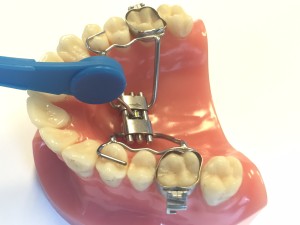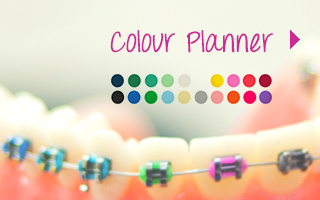Children
Orthodontic treatment is often classified into different stages based on the dental and skeletal development of your child.
Early Treatment is also known as Phase 1 treatment or Interceptive Orthodontics. This is treatment carried out when your child has a mixture of baby and adult teeth and the top jaw has not completed its natural growth (approximately ages 7-12).
Comprehensive Treatment is also known as Phase 2 or Full Braces treatment. This is the orthodontic treatment provided when all the adult teeth have erupted and the face is undergoing active growth during puberty (12-18 years of age depending on each child’s individual growth and development pattern)
Early orthodontic treatment can be indicated to intercept a developing problem or diagnose an imbalance in the growth of the teeth and facial bones. Both the Australian and American Society of Orthodontists recommend a first assessment around the age of 7 or 8 years in order to detect early developmental problems. These can include crossbites, reverse underbites, protruding teeth, sucking habits and space problems where adult teeth cannot erupt.
Early treatment is performed while your child still has many of their ‘baby’ teeth with the aims of:
- Preventing a problem from developing
- create space and guide adult teeth into better positions
- reduce the likelihood of extractions of permanent teeth
- make full braces treatment quicker and easier and more stable
- Intercepting a developing problem
- improve the jaw shape and widen the smile
- improve smiles and restore your child’s self confidence
- help reduce speech issues due to poor tooth position
- Guiding the growth of jaw bones that support teeth
- reduce or eliminate the need for corrective jaw surgery (underbites)
- reduce the risk of injury to protruding teeth
- correct the size and shape of small, ill- fitting jaws (cross bites)
- reduce the potential for damage to the jaw joints
This treatment aims to create a better environment for your child’s permanent teeth to erupt into. Expander plates and mini-braces are two of the common appliances used during the first treatment phase. At the initial assessment appointment Dr Brennan/ Dr Lewis will listen to your concerns and thoroughly assess your child and their individual pattern of growth and development. They will then discuss with you their current and future orthodontic needs (if any) and arrange for further investigations such as radiographs, facial and dental photographs and impressions of the teeth if indicated.
We believe that you and your child should be fully informed and have time and an opportunity to fully understand and question any orthodontic conditions that have been detected. If treatment is indicated you will be able to have a hands-on look and feel of the orthodontic appliances advised and be given information about the steps involved in caring for and adjusting to something new in the mouth. This is all done in a quiet, relaxing environment, with the aim of making it easy for you and your child to learn and ask questions.
Rapid Maxillary Expansion (RME)
The maxilla (top jaw) is formed by 2 separate bones which fuse together after puberty. Up until this time the maxilla can be made wider to correct a size deficiency (crossbite) in the top jaw or to make extra space to accommodate the larger adult teeth. As specialists we are comfortable using expanders called Rapid Maxillary Expander (RME). This appliance (pictured) is cemented temporarily to your child’s top adult molar teeth which means that 1) expansion is achieved quickly- within 6 weeks 2) children become adapted very easily to the fitted plate and 3) they do not have to remove it for eating/sports and so cannot lose it!
The parent/guardian is instructed on how to turn the expander using the key. Each turn very gently widens the maxilla by 0.25mm (a hair’s breadth) and so does not cause pain. Occasionally some children report a tingle or tickle under their nose after the first few turns. It is normal to notice a large gap appear between the front teeth towards the end of the turning phase and this indicates the space created. This gap slowly closes/reduces once turning has stopped.
Dr Brennan/Dr Lewis will monitor your child and measure the degree of expansion. Once the desired width has been achieved the the RME stays in place for up to 9 months to 1) allow new bone to fill in across the expanded areas 2)reduce the relapse of the widening and 3) remove the need for your child to wear a removable plate/retainer following the expansion.





